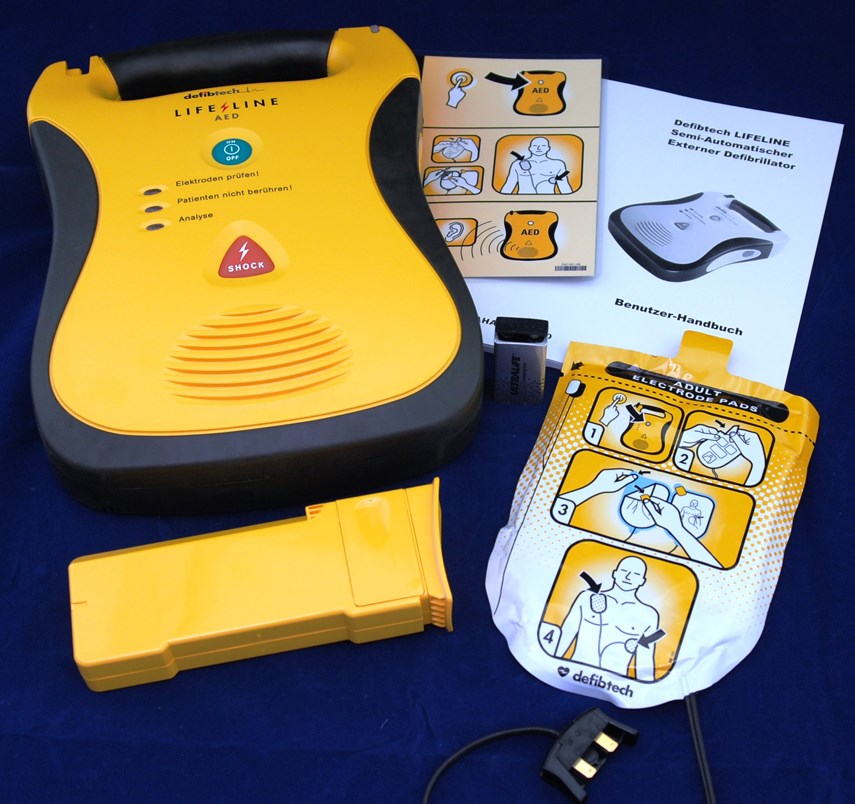Thirteen years after a teen went into cardiac arrest and died during a gym class at Argyle Secondary, there are still no defibrillators in North Vancouver public schools.
But that could be finally be changing.
Recently, school district administrators told the school board they’re looking at phasing in defibrillators for North Vancouver high schools.
A total of $20,000 has been set aside in next year’s draft budget toward that goal.
The life-saving devices – which can be used to jump-start a person’s heart with an electric shock – have long been on the wish lists of both teachers and parents.
Parents would “absolutely” support having the potentially life-saving devices in schools, said Amanda Nichol, chair of North Vancouver’s District Parent Advisory Council.
But “we have so many other priorities” that defibrillators have ended up getting pushed down the priority list, she said.
Some teachers in North Vancouver high schools recently received training on heart defibrillators as part of a program sponsored by the Lions Gate Rotary Club and the Deep Cove Lions.
The aim of the program is to offer the training to high-school students at Windsor, Argyle, Carson Graham and Sutherland next year.
But getting automated external defibrillators (AEDs) installed in schools has proved a sticking point until now.
In 2010, trustees rejected an offer by the mother of the teen who died to donate an AED for Argyle, arguing it would be too expensive to install and maintain the devices in all 32 schools.
The ministry of education follows the recommendations of the provincial health officer when it comes to defibrillators.
Unless there is a child attending a school with a specific medical risk, the health office hasn’t recommended AEDs be installed in schools. Funding for the devices also isn’t covered by the province.
But school trustees said recently it’s something they’d eventually like to see.
“Everywhere I go now I see one,” commented school trustee Franci Stratton when the issue was raised at a recent school board meeting. “I’m certainly supportive of that.”
The first AEDs will be installed in North Vancouver secondary schools. Those are considered a higher priority, because the larger facilities tend to be used more by adults for sports activities, said Nevasha Naidoo, spokeswoman for the school district.
Defibrillators have been in place for several years in West Vancouver schools.
The West Vancouver school board approved $40,000 to install AEDs in schools five years ago.
“I know we have them at all of our high schools,” said Chris Kennedy, superintendent for the West Vancouver School District.
The defibrillators are serviced every year before school starts, which includes an inspection, software upgrade and battery and electrode pad replacement. That costs about $2,500 annually.
While school-aged children are generally at low risk for heart attacks, “part of the issue is there are a lot of adults in the buildings,” said Kennedy.
The issue of defibrillators in schools was highlighted last July after a Vancouver elementary school teacher saved a 12-year-old student’s life when the girl collapsed of cardiac arrest during recess at summer school.
In that case, there was also no defibrillator at the school, but emergency dispatchers talked the teacher through CPR until paramedics arrived with the device.
Research indicates that the use of an AED with CPR within the first few minutes of a cardiac arrest can increase a person’s chance of survival by up to 50 per cent.
Chances of surviving a cardiac arrest drop between seven and ten per cent each minute that passes without a person receiving defibrillation to re-start their heart.



